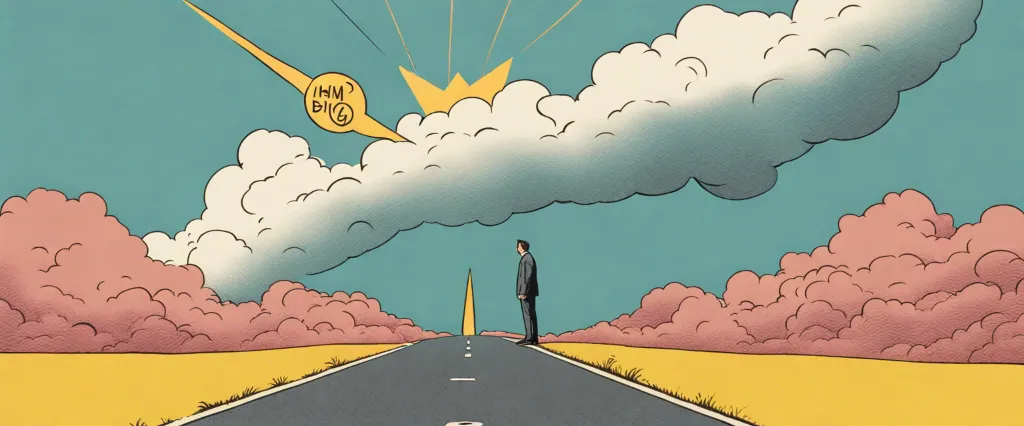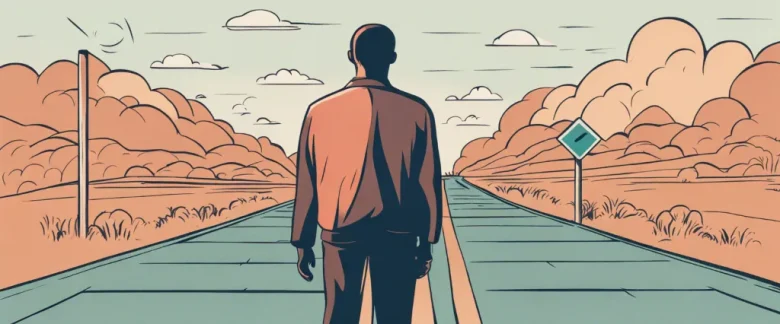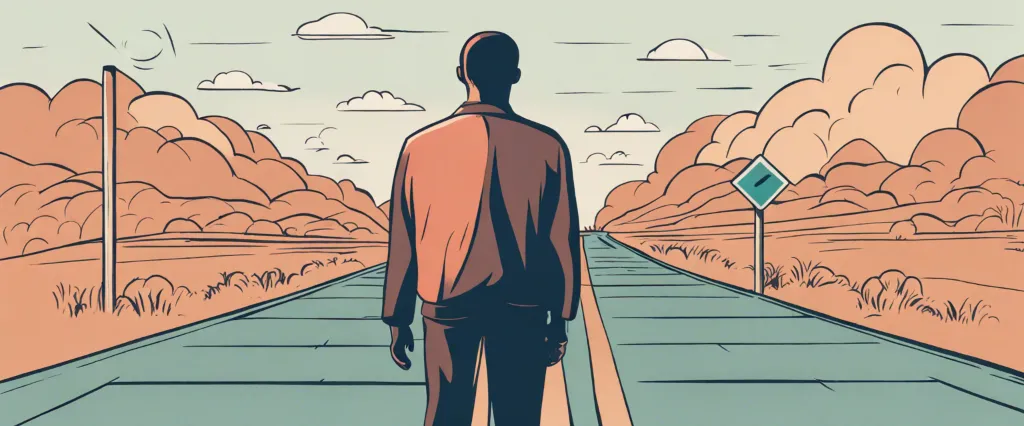In “The Big Leap,” Gay Hendricks delves into the concept of an upper limit problem that holds us back from achieving our true potential. Through insightful anecdotes and practical strategies, Hendricks guides readers on a transformative journey towards success, happiness, and fulfillment. Renowned for his expertise in personal development and relationships, Hendricks is a psychologist, bestselling author, and co-founder of the Hendricks Institute, focusing on the power of conscious living and authentic self-expression. With his wealth of knowledge, Hendricks presents a profound exploration of self-imposed limitations and a roadmap for transcending them to unlock our full potential.
Chapter 1: The Upper Limit Problem – Recognizing and Overcoming Self-Sabotage
Chapter 1 of “The Big Leap” by Gay Hendricks is titled “The Upper Limit Problem – Recognizing and Overcoming Self-Sabotage.” In this chapter, Hendricks introduces the concept of the Upper Limit Problem (ULP), which refers to the self-imposed barriers that prevent individuals from reaching their full potential and experiencing lasting success and happiness.
Hendricks begins by discussing the four fundamental zones of human living: the Zone of Incompetence, in which we engage in activities we are not skilled at; the Zone of Competence, where we exhibit average proficiency; the Zone of Excellence, where we excel and achieve recognition; and finally, the Zone of Genius, which represents our unique abilities and highest potential.
He explains that the ULP arises when individuals approach the Zone of Genius and begin to experience discomfort, fear, and self-doubt. This discomfort triggers self-sabotaging behaviors, as we subconsciously believe that we don’t deserve or are afraid of the success and happiness that come with operating in our Zone of Genius.
Hendricks argues that the ULP is deeply ingrained in our upbringing and cultural conditioning, and we must actively identify and dismantle it to achieve personal growth and fulfillment. He provides various examples and case studies to illustrate how people recognize and succumb to their ULPs in various aspects of life, such as relationships, finances, and professional success.
To overcome the ULP, Hendricks introduces the concept of making a “Big Leap,” which involves taking conscious steps to increase our capacity for success and happiness. He suggests cultivating self-awareness, acknowledging and challenging limiting beliefs, practicing self-love and acceptance, and embracing the discomfort that arises when we step into our Zone of Genius.
In summary, Chapter 1 of “The Big Leap” explores the Upper Limit Problem and its impact on our personal growth and fulfillment. Hendricks encourages readers to identify and overcome self-sabotaging behaviors in order to make the Big Leap towards their fullest potential and a life of abundance and joy.
Chapter 2: The Four Hidden Barriers to Success
Chapter 2 of “The Big Leap” by Gay Hendricks is titled “The Four Hidden Barriers to Success.” In this chapter, the author explores the four main obstacles that prevent people from reaching their full potential and experiencing true success in various aspects of their lives.
The first barrier is the Upper Limit Problem. Hendricks suggests that all individuals have a set thermostat for happiness and success, which prevents them from surpassing a certain level of achievement. This self-imposed limit stems from past conditioning and beliefs about one’s worthiness for love and success. When we approach or exceed this limit, we tend to self-sabotage or create problems to bring ourselves back down to a more familiar and comfortable state.
The second barrier is Feeling Fundamentally Flawed. Here, Hendricks explains that many people harbor deep-seated feelings of inadequacy and unworthiness that they inherited from childhood experiences. These feelings create a sense of inner conflict and prevent individuals from fully embracing their natural talents and capabilities.
The third barrier, Disloyalty and Abandonment, delves into the fear of outshining others or leaving behind loved ones as we grow and evolve. The desire to remain loyal and connected to our roots can hinder our personal growth, often resulting in staying within the confines of our comfort zone.
The final barrier is believing that More Success Brings a Bigger Burden. This barrier stems from the misconception that success equates to increased responsibility and stress. Many individuals fear that as they reach higher levels of success, they will struggle to handle the additional pressure, leading them to hold themselves back from achieving their true potential.
Overall, this chapter sheds light on the subconscious barriers that hinder our success and happiness, urging readers to become aware of these limitations and adopt a mindset that allows for reaching their full potential. By recognizing and addressing these barriers, individuals can overcome their self-imposed limitations and experience greater levels of success and fulfillment.
Chapter 3: The Ultimate Success Mantra – “I Expand in Abundance, Success, and Love Every Day”
In Chapter 3 of “The Big Leap” by Gay Hendricks, the author introduces the ultimate success mantra: “I expand in abundance, success, and love every day.” This mantra encapsulates the key to unlocking one’s full potential and achieving ultimate success in all aspects of life.
Hendricks emphasizes the importance of overcoming the Upper Limit Problem (ULP), which refers to the subconscious barriers that limit us from reaching our full potential. The success mantra serves as a powerful tool to break through these limits and expand our capacity for abundance, success, and love.
The author explains that the mantra works by repetitively affirming and reinforcing the belief in one’s inherent capacity for expansion and success. By continuously affirming this mantra, we rewire our subconscious minds and override any self-destructive beliefs or patterns that limit us.
Hendricks advises readers to practice reciting the mantra daily, preferably in front of a mirror, internalizing it on a profound level. By doing so, we align ourselves with the infinite potential that exists within us and open doors to opportunities, prosperity, and deepening relationships.
Alongside the mantra, the author also introduces “infinite potential” as an important concept. He explains that by tapping into this concept and embracing the mantra, individuals can break free from self-imposed limitations and truly thrive in all areas of life.
Overall, Chapter 3 of “The Big Leap” encourages readers to adopt the success mantra of “I expand in abundance, success, and love every day” as a powerful tool for overcoming the Upper Limit Problem and unlocking their true potential for success and fulfillment. Through daily repetition and internalization, this mantra paves the way for a life of unlimited possibilities.
Chapter 4: Moving Beyond Fear and Embracing Genius

Chapter 4 of “The Big Leap” by Gay Hendricks focuses on moving beyond fear and embracing your genius. Hendricks explores the concept of the “Upper Limit Problem” (ULP), which refers to self-imposed limitations that prevent us from reaching our full potential and experiencing happiness, love, and success.
The chapter begins by explaining that fear is the primary factor holding us back from living a life of fulfillment. Fear operates in two ways: the fear of outshining others and the fear of undeserved success. These fears cause us to sabotage ourselves when we start to achieve or experience moments of greatness and joy.
Hendricks introduces the concept of the Genius Zone, an optimal state where we experience a heightened sense of creativity, happiness, and flow. It is a place where we can fully express our innate talents and abilities. However, fear often pulls us out of this zone, leading to self-sabotage and returning to a state of mediocrity.
To overcome fear and embrace our genius, Hendricks suggests several strategies. The first is to recognize when we are experiencing an Upper Limit Problem. This involves being aware of self-doubt, negative self-talk, and resistance when things are going well in our lives. By identifying these patterns, we can consciously choose to move beyond fear.
The second strategy is to practice feeling good. Hendricks emphasizes the importance of allowing ourselves to feel happiness and success without guilt or fear. By expanding our capacity to experience positive emotions, we can break free from the limitations of the Upper Limit Problem.
Finally, Hendricks encourages the cultivation of self-love and self-compassion. By embracing our underlying worthiness and acknowledging that we deserve success and happiness, we can dismantle the fear that holds us back.
In summary, Chapter 4 of “The Big Leap” highlights the role of fear in preventing us from accessing our genius zone. Hendricks provides insights and strategies to move beyond fear, recognize our self-imposed limitations, and embrace our full potential. Through awareness, self-love, and allowing ourselves to feel good, we can overcome the Upper Limit Problem and live a life of joy, success, and fulfillment.
Chapter 5: The Zone of Genius – Discovering Your Unique Abilities
Chapter 5 of “The Big Leap” by Gay Hendricks, titled “The Zone of Genius – Discovering Your Unique Abilities,” delves into the concept of the “Zone of Genius” and the transformative power it holds in our lives. The author posits that each person has a specific area in which they possess innate talents, skills, and passions that sets them apart from others.
Hendricks argues that living in our Zone of Genius enables us to experience true fulfillment, success, and extraordinary results. However, he identifies four different zones that people often find themselves in: the Zone of Incompetence, the Zone of Competence, the Zone of Excellence, and the elusive Zone of Genius.
The Zone of Incompetence refers to tasks or activities that we struggle with and in which we have no particular talent. Hendricks encourages readers to focus on outsourcing or eliminating these tasks to free up time and energy for more important pursuits. Similarly, the Zone of Competence involves tasks we can do adequately but do not necessarily enjoy. The author suggests minimizing time spent in this zone to make room for more meaningful endeavors.
The Zone of Excellence represents an area where we excel and are recognized for our skills but may not feel fulfilled. Many successful people find themselves trapped in this zone, as societal expectations and external validation can overshadow true passion and purpose.
Finally, the author introduces the Zone of Genius, which lies beyond the boundaries of the other three zones. This zone is marked by activities that we are not only exceptionally skilled at but also deeply passionate about. Hendricks emphasizes that finding and embracing this zone can be life-changing, leading to increased creativity, fulfillment, joy, and success.
To discover our Zone of Genius, the author suggests self-reflection and paying attention to moments of flow and deep engagement. By identifying our unique abilities and aligning our lives around them, we can access our full potential and create a life of purpose and abundance.
In summary, Chapter 5 of “The Big Leap” explores the concept of the Zone of Genius and its transformative impact on our lives. Hendricks encourages readers to identify their unique abilities, talents, and passions and cultivate a life that revolves around them. This shift allows us to experience true fulfillment and unlock our full potential for creativity, success, and happiness.
Chapter 6: The Relationship Between Time and Money
Chapter 6 of “The Big Leap” by Gay Hendricks explores the intricate relationship between time and money and how they impact our lives. The author begins by highlighting the importance of recognizing that time and money are not separate entities but interconnected aspects of our existence.
Hendricks argues that our view of time and money greatly impacts our ability to experience abundance. He introduces the concept of “exponential time,” a mindset that sees time as expanding and limitless rather than linear and finite. By embracing this perspective, we can break free from the constriction of time and tap into limitless possibilities.
The author then delves into the relationship between money and time, emphasizing that our beliefs and attitudes about money directly affect how we use and experience our time. He identifies two opposing archetypes, the “good-time Charlie” and the “workaholic,” who respectively struggle with either mismanaging their time or being overly consumed by work. Hendricks suggests that finding a balance between these extremes is key to achieving fulfillment and success.
Furthermore, Hendricks introduces the concept of the “Einstein Time Technique,” a practice that involves altering our perception of time by consciously deciding to experience it as flexible and expansive rather than rigid and limited. By cultivating this mindset, we can create more time for ourselves and prioritize activities that align with our passions and goals.
Overall, Chapter 6 of “The Big Leap” illustrates the profound connection between time and money and emphasizes the importance of adopting a positive and abundant mindset to unlock our true potential for success and happiness.
Chapter 7: The Art of Savoring and Celebrating
Chapter 7 of “The Big Leap” by Gay Hendricks focuses on the concept of savoring and celebrating, encouraging readers to fully engage in the present moment and appreciate the positive aspects of their lives. The chapter emphasizes the importance of enhancing one’s happiness and overall well-being by consciously making an effort to savor and celebrate even the smallest moments of joy.
Hendricks discusses the tendency for individuals to overlook their accomplishments and rush through life without fully appreciating the present. He introduces the idea of “time scarcity,” where people often feel like they don’t have enough time to truly savor and celebrate their experiences. By allowing oneself to fully enjoy the positive experiences in life, individuals can cultivate a greater sense of well-being and satisfaction.
The author offers several strategies to help readers practice the art of savoring and celebrating. Firstly, he suggests taking a pause throughout the day to acknowledge and appreciate the pleasures around them, such as the beauty of nature or the taste of a delicious meal. Hendricks also encourages readers to celebrate their successes, no matter how small, by acknowledging and acknowledging their achievements. This not only boosts self-esteem but also reinforces the belief that one is deserving of happiness and success.
In addition, Hendricks advises readers to let go of any guilt or unworthiness associated with enjoying positive experiences and instead embrace the feelings of happiness and contentment. By consciously choosing to savor and celebrate the positive aspects of life, individuals can create a positive feedback loop that leads to even more joy and fulfillment.
Overall, Chapter 7 of “The Big Leap” emphasizes the importance of savoring and celebrating the present moment. Through the practice of conscious appreciation and celebration, individuals can enhance their overall well-being and experience a greater sense of joy and fulfillment.

Chapter 8: Living in the Zone of Genius – Creating a Life of Effortless Success and Fulfillment
Chapter 8 of “The Big Leap” by Gay Hendricks titled “Living in the Zone of Genius – Creating a Life of Effortless Success and Fulfillment” explores the concept of reaching one’s highest potential and finding true fulfillment in life. The chapter emphasizes the importance of living in one’s Zone of Genius, a place where an individual can utilize their unique talents and abilities to achieve effortless success.
Hendricks explains that the Zone of Genius is a state where individuals fully express their innate gifts and talents. This state allows them to operate at their highest potential and experience a sense of flow and fulfillment. However, many individuals find themselves trapped in the Zone of Excellence, where they are highly skilled and successful but not necessarily fulfilled. The author argues that the journey to the Zone of Genius requires confronting and overcoming the fears and limitations that hold individuals back.
Hendricks provides practical strategies for living in the Zone of Genius. One key strategy is to identify and acknowledge the unique abilities and gifts that make individuals special. This involves recognizing and letting go of the limiting beliefs and self-sabotaging behaviors that prevent individuals from fully expressing their talents.
Furthermore, the author suggests creating a support network of individuals who believe in one’s potential and can provide guidance along the way. Hendricks also emphasizes the importance of taking ownership of one’s choices and decisions, as that is essential for shaping a life of effortless success and fulfillment.
In conclusion, Chapter 8 of “The Big Leap” highlights the value of living in the Zone of Genius where individuals can tap into their unique talents and achieve both effortless success and deep fulfillment. The journey to this zone requires confronting fears, letting go of limiting beliefs, building a support network, and taking responsibility for one’s choices. Ultimately, embracing one’s highest potential can lead to a life of limitless possibilities and profound contentment.
After Reading
In conclusion, “The Big Leap” by Gay Hendricks is a thought-provoking book that delves into the concept of limiting beliefs and how they hinder our personal and professional growth. Hendricks emphasizes the importance of identifying and overcoming our “Upper Limit Problem,” which is the self-imposed glass ceiling that prevents individuals from reaching their full potential. By embracing our fears, stepping out of our comfort zones, and shifting our mindset to one of abundance and possibility, Hendricks provides practical strategies for making a big leap in all areas of our lives. This book serves as a powerful reminder that we have the ability to create a life of joy, success, and fulfillment if we are willing to confront and conquer our fears.
1. Atomic Habits: An Easy & Proven Way to Build Good Habits & Break Bad Ones” by James Clear – This book explores the science behind habit formation and provides practical strategies for creating positive lasting change in your life.
2. “The War of Art: Break Through the Blocks and Win Your Inner Creative Battles” by Steven Pressfield – Drawing from his own experience as a writer, Pressfield tackles the inner resistance that prevents us from achieving our creative ambitions and offers guidance on overcoming self-doubt.
3. “Daring Greatly: How the Courage to Be Vulnerable Transforms the Way We Live, Love, Parent, and Lead” by Brené Brown – In this inspiring book, Brown explores the power of vulnerability and how embracing it can lead to enhanced relationships, personal growth, and wholehearted living.
4. The Power of Now: A Guide to Spiritual Enlightenment” by Eckhart Tolle – Tolle provides a powerful and transformative guide to living in the present moment, teaching readers how to let go of past regrets and future anxieties in order to find true fulfillment.
5. Essentialism: The Disciplined Pursuit of Less” by Greg McKeown – This book challenges the notion that we need to do it all and instead encourages readers to focus on the essential few, helping them regain control of their time, energy, and priorities.
Each of these books offers valuable insights and practical strategies for personal growth, self-improvement, and achieving your full potential, making them great choices for readers who enjoyed “The Big Leap” by Gay Hendricks.




